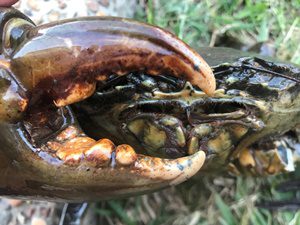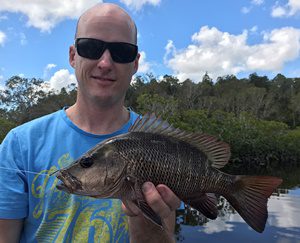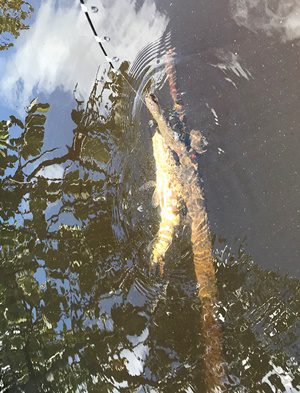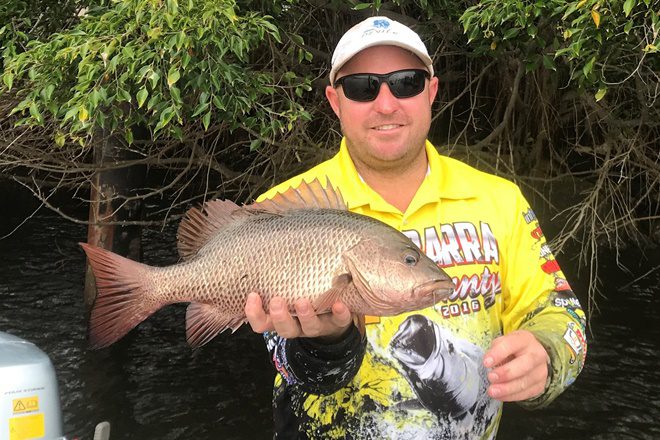




DECEMBER is upon us already, which means it’s nearly time for the round man in the red suit to bring us all a few fishing treats.
Hopefully everyone has been well behaved this year, so the rod racks and lure boxes get well stocked.
December is a very busy month on the water. School holidays will see a lot of extra boats out and about and plenty of anglers will be out trying their luck at catching crabs and fish for Christmas Day.
Mud crabs will be well and truly on the move now summer is here. If you are using fresh baits, you should be able to pot a few decent crabs this month. Learning how to distinguish between a quality crab and an empty crab will help when it comes time to serve these treats up to family at Christmas. There are a few ways to tell if a crab is full. Crabs that are full are generally dark and have a rusty colour underneath the carapace.
Occasionally a shell will have barnacles growing on it and this indicates the crab has been in the shell for a long time and will be full. A quick look at the claws can also reveal how well the crab has been feeding. If the claws are sharp it is likely the crab has only recently shed its old shell and is more than likely not going to be very full. A full crab will have worn and sometimes even damaged claws.
Another way of checking if the crab is full is to press on the underside of the shell on the very outside of the carapace. If you can’t push it in the crab is full. If it goes in easily the crab is empty and is probably better off released.
Local fishing
Mangrove jack have been a hot topic lately and December is another good month to test your skills on these aggressive fish. Boat traffic can shut mangrove jack down very easily, so planning your trips around the low-light periods and into the night can increase your chances of success. For many anglers, it is a dream to land a mangrove jack on a lure. Some anglers catch them regularly, but for people just getting into lure fishing it can be very difficult to achieve.
A lot of hours can go into getting a bite from a mangrove jack. The real trouble begins once the fish is hooked and then all hell breaks loose. The speed of an angry jack has to be seen to be believed. I’ve had them do some crazy things to me that you would never think a fish of that size is capable of. It can be heartbreaking when you finally get the bite after hours of casting at snags, only to have the fish bust you off in the blink of an eye.
However, that’s what keeps us going back for more. An easier way to land your first mangrove jack is by using live or cut baits. This can be a devastating way to catch good numbers of mangrove jack and it also puts you in with a better chance of actually landing one. I use a very basic technique of floating half pilchards into snags in the small creeks of the Great Sandy Strait. These creeks can be really hard work when casting lures for jacks.
In the early days I put it down to the creeks having no fish, however this was proven to be very wrong. Once I started using pilchards or live baits it opened my eyes to how many fish call these mangrove-lined creeks home. Even in the middle of the day it’s possible to catch big numbers of jacks using this technique. On one of my more recent trips a mate and I landed 10 jacks in an hour in the middle of the day.
Many of the fish are in the 35-45cm range in these creeks, but some big brutes among them are nearly impossible to keep out of the mangrove jungles. I have had to climb through the mangroves to untangle a few over the years. This technique works everywhere and will catch you jacks all through Queensland. I did it with my dad at Hinchinbrook Island recently and it worked a treat up there too.
It’s a very basic rig. In areas of very little tidal flow you can get away with no sinker at all, as the pilchard is heavy enough to sink to the bottom. A pea sinker is all that’s needed in most other areas. It can take a few minutes for the fish to start biting, but once the bream and cod get involved it creates a perfect berley trail and fish come from everywhere to get involved.
I use hooks in the 3/0-5/0 range and find Mustad Penetrators perfect for this style of fishing. They are fine-gauge hooks that are very sharp and perfect for hooking hard-mouthed fish like jacks and bream. I have never straightened one on a fish but they do straighten on snags. Bait soaking for jacks isn’t everyone’s cup of tea, but it will outfish lures every day of the week when done correctly.
Some anglers refuse to bait fish, but I can tell you they are missing out on a lot of fun and plenty of action. I hope everyone has a good Christmas with loads of presents and some cold treats. I’ll see you on the water and talk to you next year.
 Bush ‘n Beach Fishing Magazine Location reports & tips for fishing, boating, camping, kayaking, 4WDing in Queensland and Northern NSW
Bush ‘n Beach Fishing Magazine Location reports & tips for fishing, boating, camping, kayaking, 4WDing in Queensland and Northern NSW









